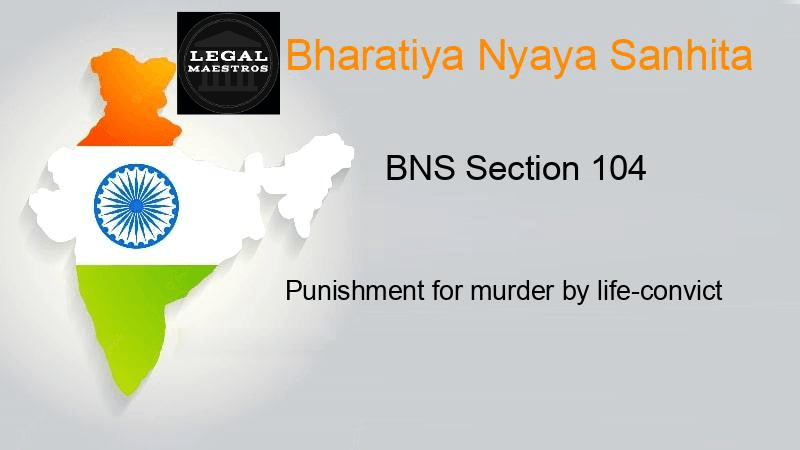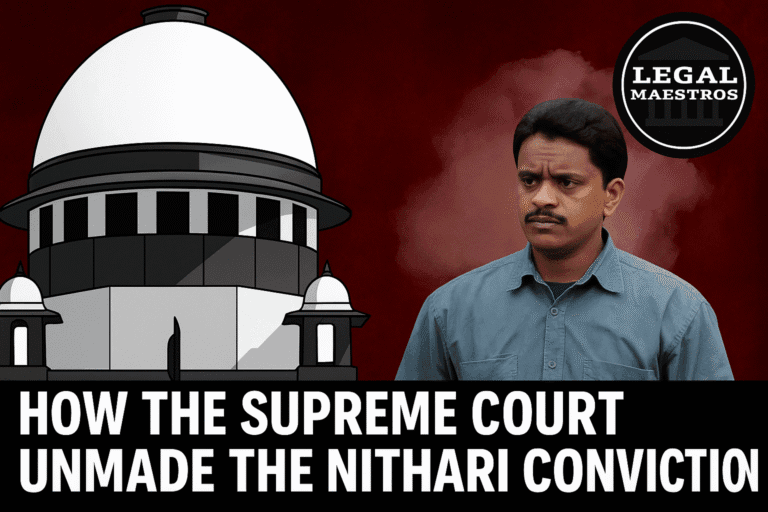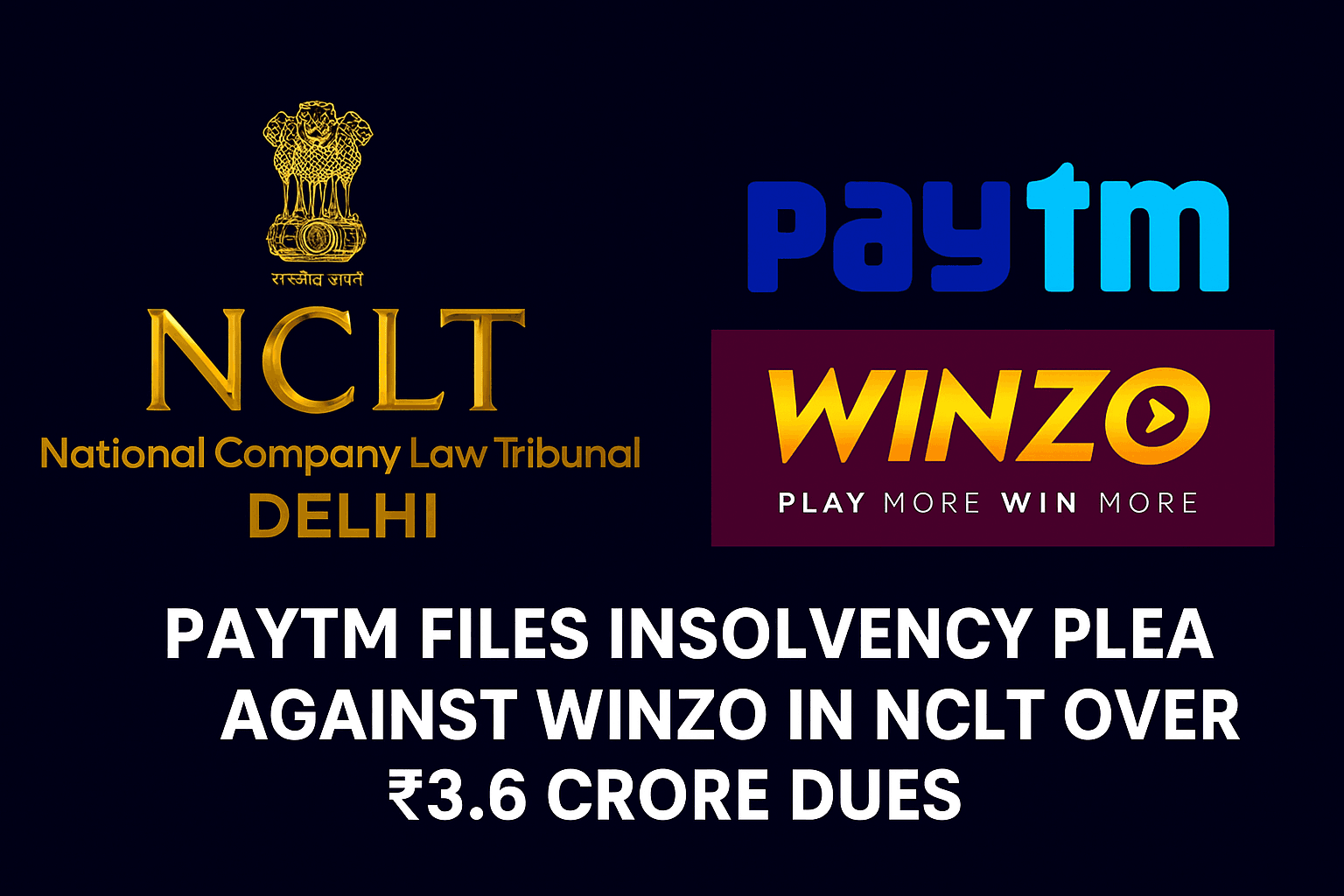
Is Section 104 of the Bharatiya Nyaya Sanhita Unconstitutional?
Introduction
The penalty for murder committed by a life convict or a criminal who is currently serving a sentence of death is outlined in Section 104 of the Bharatiya Nyaya Sanhita (BNS). It is possible for the court to impose a sentence of either death or life imprisonment on such a criminal under this law.
The Indian Penal Code (IPC) Section 303, which has since been abolished, commanded the death sentence without any room for discretion. This stands in contrast to the current situation. Due to the fact that Section 303 was declared illegal in the case of Mithu v. State of Punjab, the constitutional issue in question has arisen.
Is the wording of Section 104, which is discretionary, able to rectify the constitutional flaws that were present in its predecessor, or does it continue to be susceptible to challenge?
For any queries or to publish an article or post or advertisement on our platform, do call at +91 6377460764 or email us at contact@legalmaestros.com.
Background: Section 303 IPC and the Mithu Judgment
Under the provisions of Section 303 of the Indian Penal Code, a person who was already serving a life sentence and was convicted of murder would be expected to “suffer death.” With the implementation of this obligatory death sentence, judicial discretion was eliminated, and the court was compelled to apply the death penalty regardless of any mitigating circumstances.
In the historically significant case of Mithu v. State of Punjab, which took place in 1983, the Supreme Court ruled that this obligatory requirement violated the Constitution.
The Supreme Court came to the conclusion that an infringement of Article 14’s guarantee of equality and Article 21’s protection of life and personal liberty would occur if judges were denied the authority to take into account the specific circumstances of each case.
For any queries or to publish an article or post or advertisement on our platform, do call at +91 6377460764 or email us at contact@legalmaestros.com.
The fact that Section 303 made the death penalty the sole option placed human rights subservient to the authority of legislative fiat.
For More Updates & Regular notes, Join Our WhatsApp group (https://chat.whatsapp.com/DkucckgAEJbCtXwXr2yIt0) and Telegram Group ( https://t.me/legalmaestroeducators )
Evolution: Section 104 of the Bharatiya Nyaya Sanhita
An update of India’s criminal laws was brought about by the Bharatiya Nyaya Sanhita, which was enacted in 2023. While Section 104 handles the same problem as the previous Section 303, there are significant variations between the two. Rather of automatically inflicting the death penalty, it gives the judges the authority to choose between the death penalty and life imprisonment.
For any queries or to publish an article or post or advertisement on our platform, do call at +91 6377460764 or email us at contact@legalmaestros.com.
This flexibility is a reflection of the notion that the punishment should be proportional to the offender’s level of responsibility as well as the specific circumstances of the case.
Therefore, Section 104 incorporates judicial discretion by permitting mitigating factors, such as the offender’s past, mental health, or involvement in the crime, to be considered in the context of determining whether or not the death penalty should be imposed.
Key Differences Between Section 303 IPC and Section 104 BNS
It is the decision of the sentence that constitutes the most important difference. In contrast to Section 104, which does expressly restore the courts’ latitude, Section 303 removed any and all leeway.
For any queries or to publish an article or post or advertisement on our platform, do call at +91 6377460764 or email us at contact@legalmaestros.com.
The new clause codifies conditions for the imposition of the death penalty, which is in line with the accepted doctrine that the death penalty should be reserved for the “rarest of rare” circumstances.
In addition, Section 104 requires that courts document the reasoning behind their decisions, which helps to ensure openness and makes it easier for higher courts to examine the judgment. This procedural safeguard works to reinforce the constitutional basis of the provision by protecting against the imposition of death sentences that are arbitrary or capricious.
Fundamental Rights and Sentencing Discretion
Articles 14 and 21 of the Constitution are enshrined as cornerstones of justice and dignity throughout the whole Constitution. While Article 14 mandates that everyone be treated equally under the law, Article 21 safeguards both personal liberty and the right to life.
For any queries or to publish an article or post or advertisement on our platform, do call at +91 6377460764 or email us at contact@legalmaestros.com.
The imposition of mandatory death sentences is intrinsically incompatible with these principles due to the fact that they create actual results without taking into account individual circumstances.
The discretionary punishment that is outlined in Section 104, on the other hand, is in accordance with these rights. Judges have the ability to take into consideration both aggravating and mitigating circumstances, allowing them to craft individualized sentences that respect the rights of the criminal while still maintaining public safety and retribution expectations.
Death Penalty Jurisprudence in India
For a very long time, the authorities in India have maintained that the death penalty is an extraordinary punishment. According to the “rarest of rare” concept established by the Supreme Court, the courts are required to reserve the use of the death penalty for situations that demonstrate severe depravity or pose a threat to society.
For any queries or to publish an article or post or advertisement on our platform, do call at +91 6377460764 or email us at contact@legalmaestros.com.
For the sole purpose of avoiding blanket death penalty plans that pose a danger to the independence of the judiciary, this concept was developed. This principle is reflected in the dual choice provision of Section 104, which incorporates discretion within the act itself.
It allows the courts to discriminate between extremely terrible offenses and those that are less culpable, acknowledging that not every murder committed by a life convict requires the ultimate sentence.
Constitutional Validity of Section 104 BNS
In light of the shortcomings existing in Section 303, the validity of Section 104 is contingent on whether or not it sufficiently solves those deficiencies. The loss of discretion is immediately remedied by the reinstatement of the judicial option between punishment by death and imprisonment for life.
For any queries or to publish an article or post or advertisement on our platform, do call at +91 6377460764 or email us at contact@legalmaestros.com.
In addition to reducing the likelihood of arbitrary choices, the legislative need to record the reasons behind sentence is also effective. It is nevertheless necessary for the courts to apply the “rarest of rare” test, and appellate review will be used to ensure that this standard is followed.
When all of these characteristics are considered together, they provide a sturdy framework that is in accordance with Articles 14 and 21, which makes it far more probable that Section 104 will be able to pass constitutional examination.
Practical Implications and Judicial Discretion
In actuality, Section 104 transfers the emphasis to comprehensive sentencing hearings than it did before. The evidence about the offender’s character, purpose, and probability of reform that is presented to the judge must be examined.
For any queries or to publish an article or post or advertisement on our platform, do call at +91 6377460764 or email us at contact@legalmaestros.com.
They consider the severity of the offense in relation to the scope of the opportunities for rehabilitation. The procedure requires time and money, but it results in outcomes that are more equitable.
It is possible for criminals to get life sentences rather than death penalties if they exhibit genuine regret or a reduced level of involvement. On the other hand, persons who are actually dangerous and who continue to constitute permanent risks might still be subject to the death penalty. This individualized strategy strikes a compromise between protecting society and ensuring individual justice.
Checks and Balances: Appellate Review and Clemency
Appellate review that is significant is made easier by the need that written reasons be provided under Section 104. The sentencing criteria may be evaluated by higher courts to determine whether or not they were used appropriately and whether or not the death sentence was actually necessary.
For any queries or to publish an article or post or advertisement on our platform, do call at +91 6377460764 or email us at contact@legalmaestros.com.
Furthermore, the constitutional mercy powers that are granted to the President and Governors provide an additional safety valve from the beginning.
By ensuring that death sentences under Section 104 are subjected to stringent examinations during the trial, on appeal, and via executive review, these various checks guarantee that the constitutional validity of the provision under consideration is strengthened.
Conclusion
Section 104 of the Bharatiya Nyaya Sanhita is a well-considered answer to the constitutional flaws that led to the failure of Section 303 of the Indian Penal Code.
For any queries or to publish an article or post or advertisement on our platform, do call at +91 6377460764 or email us at contact@legalmaestros.com.
The newly enacted legislation brings the practice of capital sentences into conformity with Articles 14 and 21 by reintroducing judicial discretion, including the “rarest of rare” threshold, and requires open reasoning.
Even while the death sentence is still a possibility, the courts are no longer required to automatically inflict it on those who are found guilty. It is possible that they will instead tailor the penalties to the specifics of the crime as well as the profile of the offender.
Because of this well-balanced structure, Section 104 is far less susceptible to constitutional challenges, and it represents a major step forward in the development of India’s criminal justice system.
For any queries or to publish an article or post or advertisement on our platform, do call at +91 6377460764 or email us at contact@legalmaestros.com.




![Research Assistantship @ Sahibnoor Singh Sindhu, [Remote; Stipend of Rs. 7.5k; Dec 2025 & Jan 2026]: Apply by Nov 14, 2025!](https://legalmaestros.com/wp-content/uploads/2025/11/Gemini_Generated_Image_s0k4u6s0k4u6s0k4-768x707.png)
![Karanjawala & Co Hiring Freshers for Legal Counsel [Immediate Joining; Full Time Position in Delhi]: Apply Now!](https://legalmaestros.com/wp-content/uploads/2025/11/Gemini_Generated_Image_52f8mg52f8mg52f8-768x711.png)